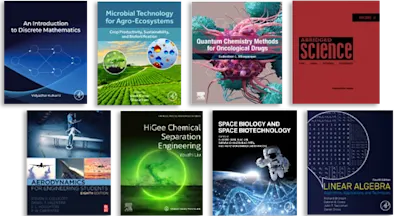
Diffusion of Innovative Energy Services
Consumers’ Acceptance and Willingness to Pay
- 1st Edition - August 31, 2023
- Latest edition
- Author: Anna Kowalska-Pyzalska
- Language: English
Diffusion of Innovative Energy Services: Consumers’ Acceptance and Willingness to Pay consolidates research in the diffusion, adoption and acceptance of Innovative energy services… Read more

Diffusion of Innovative Energy Services: Consumers’ Acceptance and Willingness to Pay consolidates research in the diffusion, adoption and acceptance of Innovative energy services (IES), including dynamic green electricity tariffs, small-scale energy generators, and smart metering information systems among residential electricity consumers. The book addresses consumer awareness, acceptance and engagement towards smart technologies, focusing on the ‘willingness to pay’ for IES. Chapters address findings from field experiments, pilot programs and simulation methods such as agent-based modeling. Case studies involve various countries and continents, with a focus on modern, pro-environmental and sustainable economies, where IES are offered.
Policy recommendations, tools and interventions as well as behavioral strategies conclude the work.
- Consolidates and integrates key findings across economic, behavioral and social elements of IES diffusion
- Addresses the economic appraisal of IES, covering consumers’ willingness to pay and the intention-behavior gap phenomenon
- Reviews current literature regarding consumers’ acceptance and engagement towards IES based on filed experiments, pilot programs, modelling and simulation
- Provides policy recommendations, marketing tools and interventions as well as the behavioral strategies necessary to enhance IES market position alongside climate policy goals
1.1. Introduction
1.2. Electricity market – overview
1.2.1. Climate policy
1.2.2. Energy transition
1.2.3. Challenges in the supply side of the market
1.2.4. Smart grids
1.2.5. Description of innovative energy services
1.3. Summary: SWOT analysis of the current energy markets
2. Consumers’ roles and opportunities in the energy market
2.1. Introduction
2.2. Active role of the consumers in the energy market: descriptions of the opportunities
2.2.1. Demand side management and demand response tools
2.2.2. Dynamic electricity tariffs
2.2.3. Smart metering and smart metering information systems
2.2.4. Small-scale green energy production
2.2.5. Green electricity tariffs and programs
2.2.6. Others
2.3. Summary: Current macro- and microeconomic data of IES markets
3. Theoretical background of innovation diffusion in the context of energy market
3.1. Introduction
3.2. The process and determinants of innovation diffusion
3.3. Models and theories
3.3.1. Model of diffusion of innovations
3.3.2. Technology acceptance model
3.4. Summary: Insights to the IES diffusion based on the theories
4. Individual behavioral theories
4.1. Introduction
4.2. Theory of planned behavior
4.3. Model of self-regulated behavioral change
4.4. Others
4.5. Intention-behavior gap phenomenon
4.6. Summary: What do the social sciences tell us about diffusion of IES?
5. Consumer acceptance and engagement of IES:practical experience and findings
5.1. Introduction
5.2. Pilot programs (case studies)
5.2.1. Demand side management and demand response tools
5.2.2. Dynamic electricity tariffs
5.2.3. Smart meters and smart metering information systems
5.2.4. Other enabling technologies
5.2.5. Green electricity tariffs and programs
5.2.6. Small-scale green energy production (e.g. photovoltaics)
5.3. Field experiments
5.3.1. Consumers’ preferences and behaviors
5.3.2. Willingness to pay (WTP)
5.3.3. Energy efficiency among residential consumers (energy saving, monitoring of energy consumption)
5.4. Diffusion of IES in the simulation and modeling
5.4.1. Consumers’ adoption rates
5.4.2. Impact of social network, financial subsidies, advertisement and education
5.5. Summary: Antecedes of consumers’ engagement in the energy market
6. Behavioral strategies and marketing interventions: policy recommendations and practical advices
6.1. Introduction
6.2. Behavioral strategies: structural, antecedents and consequence interventions
6.3. Marketing mix in the IES context
6.3.1. Market segmentation
6.3.2. Price, product, promotion and place
6.4. Policy recommendations
6.5. Summary: how to convince residential consumers to IES?
7. Bibliography
8. Glossary
- Edition: 1
- Latest edition
- Published: August 31, 2023
- Language: English
AK